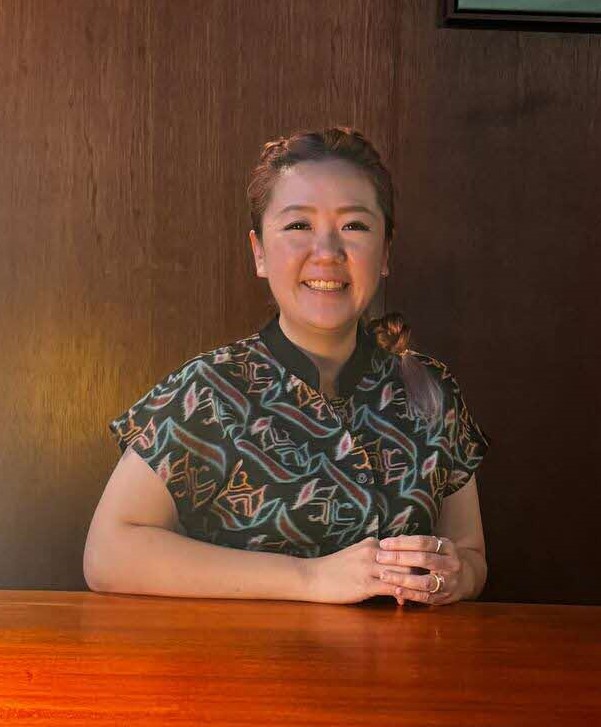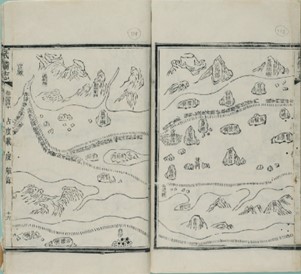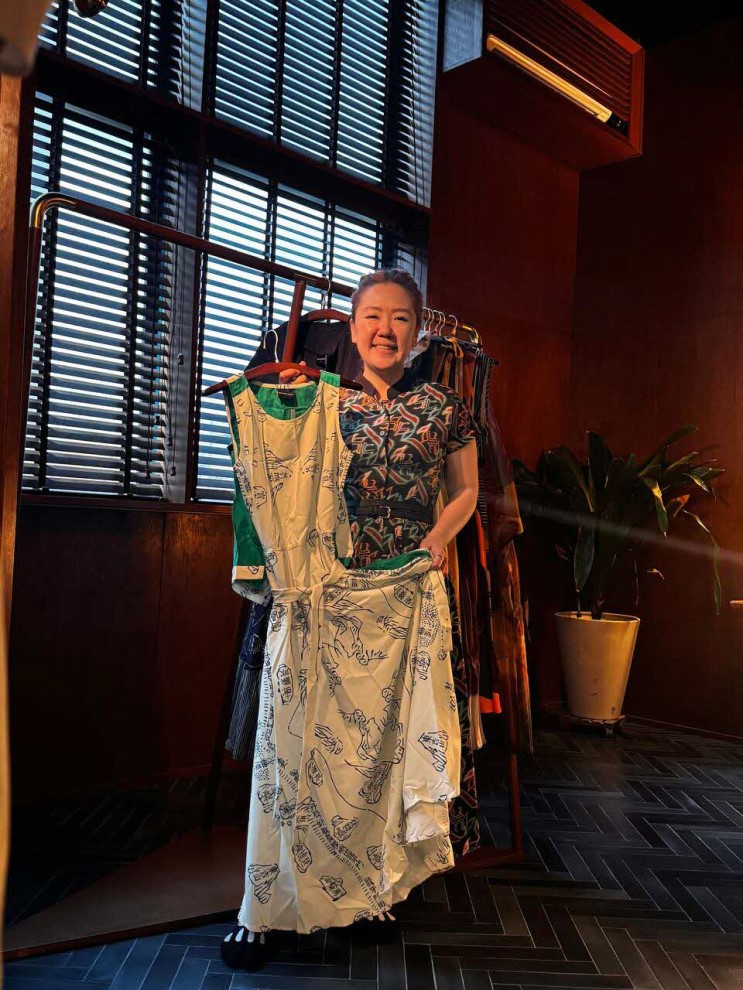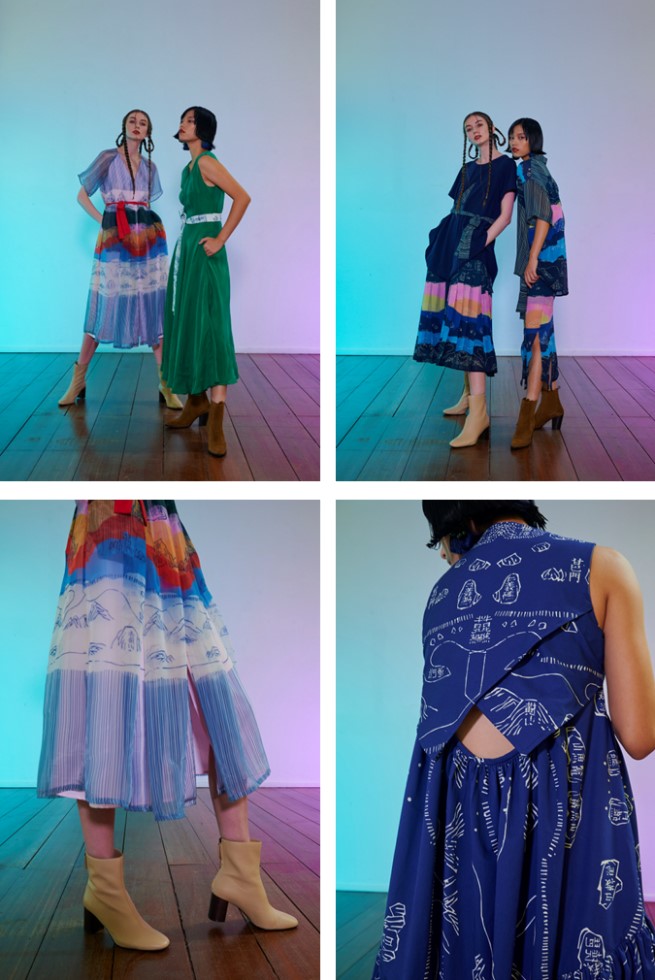From Ancient Maps to Modern Designs How a 500 Year Old Map Became Fashion
When Singapore designer Afton Chen chanced upon the Mao Kun Map, she decided to embark on a new fashion collection, sparking conversations about the history of Singapore.
By Jolynn Lim
18 August 2025
Admiral Zheng He (郑和) demonstrated Chinese naval power during the Ming dynasty when he led seven naval expeditions across the Indian Ocean between 1405 and 1433. Those expeditions helped chart the waters around Southeast Asia and in the Indian ocean. More than 500 years later, the charts that emerged from these expeditions received a new lease of life thanks to the creative efforts of fashion designer Afton Chen.
Chen is the co-founder and design director of Reckless Ericka, a local clothing brand that specialises in sustainable women’s wear. The brand, launched in 2009, produces clothes that are designed for Singapore’s climate.
 Afton Chen in her design studio, 2025. Photo by Jolynn Lim.
Afton Chen in her design studio, 2025. Photo by Jolynn Lim.When Chen first conceptualised a new collection with a travel-adventure theme, she did not know where to begin. One day, in 2021, she decided to visit the National Library Singapore for ideas. While reading up on Admiral Zheng He, Chen came across the Mao Kun Map (茅坤图), which is part of the National Library’s Rare Materials Collection.
 Mao Kun (茅坤) Map from _Wu Bei Zhi_ (武备志), chapter 240. Collection of the National Library. Singapore. Donated by the Singapore Federation of Chinese Clan Associations.
Mao Kun (茅坤) Map from _Wu Bei Zhi_ (武备志), chapter 240. Collection of the National Library. Singapore. Donated by the Singapore Federation of Chinese Clan Associations. “It was something I’ve not really seen before, and it [didn’t] look like a conventional map. So, it was a lot of firsts and we were quite excited,” Chen said. What especially piqued her curiosity were the three Chinese characters on the map: 淡马锡 (Danmaxi; the Chinese translation of Temasek and the ancient name of Singapore).
The map was first published in the late-Ming publication Wu Bei Zhi (武备志) and had been complied in 1621 by Mao Yuanyi (茅元仪). Originally drawn as a scroll, the map was recast for publication. The map is believed to be part of the personal collection of Mao’s grandfather, Mao Kun (茅坤), who owned a large and distinguished library.1
From Library to Boutique
Chen realised that the map was a chance to let more people know about Singapore’s past. “Now, we have companies called Temasek Holdings, companies that have Temasek in their names, but I don’t know how many people know where this ‘Temasek’ [comes] from,” she said.
Once Chen decided that this map would form the basis of her second collection, she emailed the National Library for a digitised copy of the map and acquired the licence to reproduce the map, thus beginning the journey for her new collection.
She traced the lines of the digitised map and cleaned up the background to replicate the simplicity of the map. She then experimented with vibrant colours and fabric materials, incorporating different materials such as cotton, rayon and recycled polyester together to give a new dimension to the map.
 One of the dresses that Afton Chen designed for the “Voyage” collection. Photo by Jolynn Lim.
One of the dresses that Afton Chen designed for the “Voyage” collection. Photo by Jolynn Lim. In 2022, after a year of intense design work, Chen launched her second collection that she aptly named “Voyage” to represent feelings of adventure, hope and the future. In total, 23 different items – 11 dresses, five skirts, six tops and a pair of shorts – were made. The collection was well received, with some of the designs selling out shortly after its release. “Many customers were drawn to the historical significance of the map,” Chen remarked, sharing that it was a talking point for many customers.
 A selection of designs from the “Voyage” collection. Courtesy of Afton Chen.
A selection of designs from the “Voyage” collection. Courtesy of Afton Chen. Inspiration from Unlikely Sources
Chen often incorporates cultural references from Singapore into her designs, straddling both the historical and the contemporary. “Because we are a Singapore brand, and we want to represent the Singaporean identity on our terms, [there is] a lot of reflecting on the past. I feel like that makes the collection more interesting [as well],” she said. “When [customers] get something from us, I feel happy because they are buying stories from us.”
Although the “Voyage” collection is no longer available today, the National Library continues to inspire Chen, who makes it a priority to visit the library before every new collection. “There’s just so much to dig into, it’s really worth exploring [the library]. There’s a whole wealth of knowledge and interesting things to see.”
Notes
-
National Library Board, On Paper: Singapore Before 1867 (Singapore: National Library Board, 2019), 20–25. (From National Library Singapore, call no. RSING 959.5703 ON); National Library Board, Stories from the Stack: Selections from the National Library Singapore (Singapore: National Library Board, Singapore: Marshall Cavendish Editions 2020), 38–39. (From National Library Singapore, call no. RSING 016.95957 SIN) ↩

